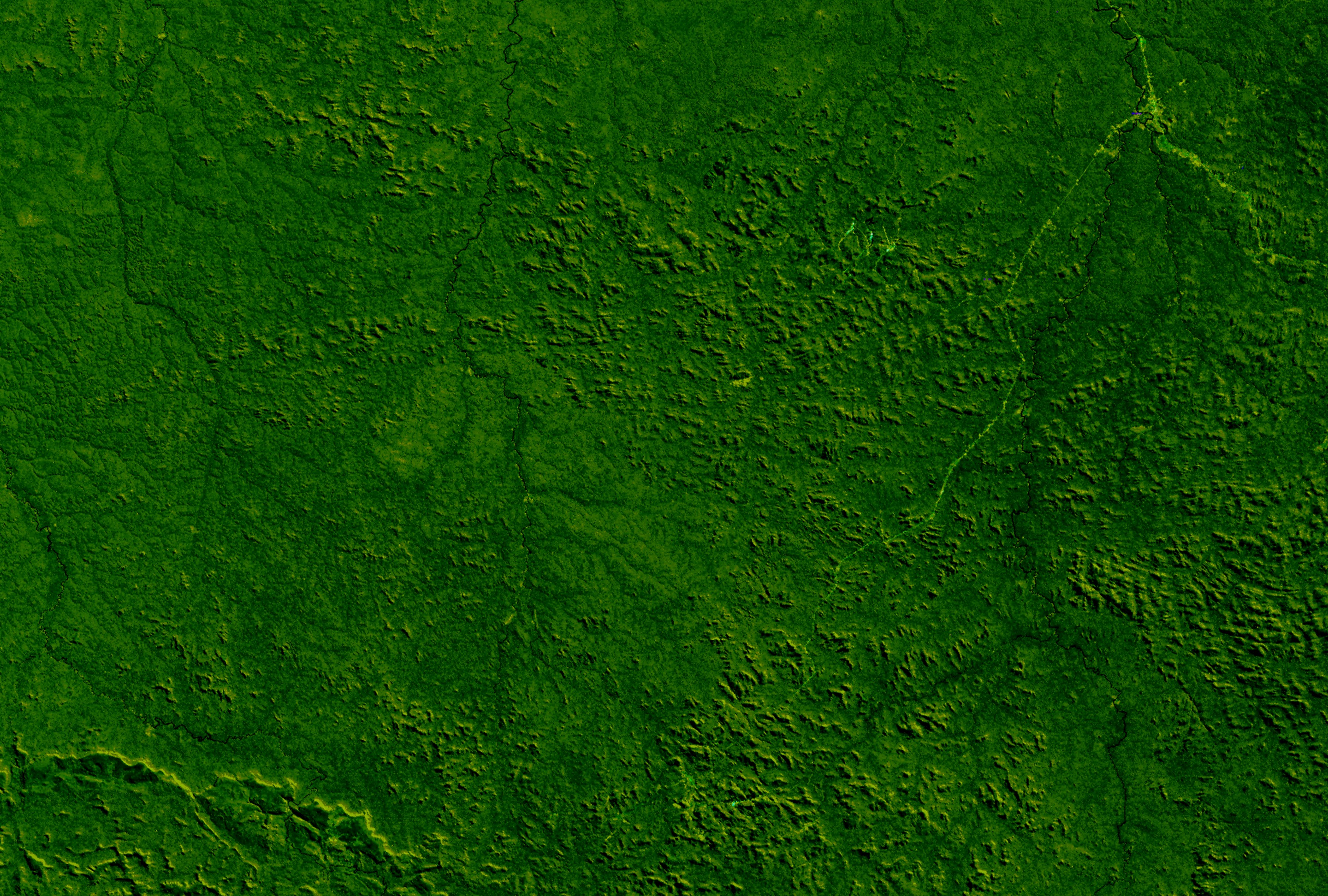Deforestation of Rondonia, Brazil, from 1975 to 2001
Brazil is also home to more than a quarter of Earth's tropical forests. Considering that the band of lush green that circles the globe through many equatorial nations is fundamental to the overall health of the whole planet's environment, careful monitoring of forest health in the tropics is essential. Tropical forests act as major carbon 'sinks', places where ambient carbon dioxide in the atmosphere can be absorbed by growing things and sequestered for years. Definitive evidence shows that excess carbon dioxide can contribute to the greenhouse effect and speed global warming. Similarly, tropical forests also act as a primary
producer of oxygen. In the respiration process that absorbs gaseous carbon dioxide, trees and other plants give off oxygen.
It is for these and a host of other reasons why scientists and policy makers need to monitor and forestall wholesale deforestation.
This sequence shows how profligate clear cutting can influence that trust. Data gathered over time by several in the Landsat series of spacecraft shows enormous tracts of forest disappearing in Rondonia, Brazil. This territory underwent an enormous rise in population towards the end of the twentieth century, buoyed by cheap land offered by the national government for agricultural use. As you see the visualization progress, it is useful to note how the human phenomenon of deforestation generally works, especially in the dense tropical forests of Brazil. Systematic cutting of a road opens new territory to potential deforestation by penetrating into new areas. Clearing of vegetation along the sides of those roads tends to fan out to create a pattern akin to a fish skeleton. As new paths appear in the woods, new areas become vulnerable. The spaces between the 'skeletal bones' fall to defoliation, and another inch of the Earth's biological rudder is no longer reliably steering the planet into the future.




For More Information
Visualization Credits
NASA/Goddard Space Flight Center Scientific Visualization Studio
https://svs.gsfc.nasa.gov/2106
Mission:
Landsat
Data Used:
Landsat-5/MSS
1992/06/22Landsat-7/ETM+
2001/02/07Landsat-4/TM
1986/08/01Landsat-2/MSS
1975/06/16This item is part of this series:
Geophysical Changes Over Time
Keywords:
DLESE >> Agricultural science
DLESE >> Environmental science
DLESE >> Forestry
SVS >> Rondonia
GCMD >> Earth Science >> Human Dimensions >> Habitat Conversion/Fragmentation >> Deforestation
GCMD >> Location >> Brazil
NASA Science >> Earth
GCMD keywords can be found on the Internet with the following citation: Olsen, L.M., G. Major, K. Shein, J. Scialdone, S. Ritz, T. Stevens, M. Morahan, A. Aleman, R. Vogel, S. Leicester, H. Weir, M. Meaux, S. Grebas, C.Solomon, M. Holland, T. Northcutt, R. A. Restrepo, R. Bilodeau, 2013. NASA/Global Change Master Directory (GCMD) Earth Science Keywords. Version 8.0.0.0.0











